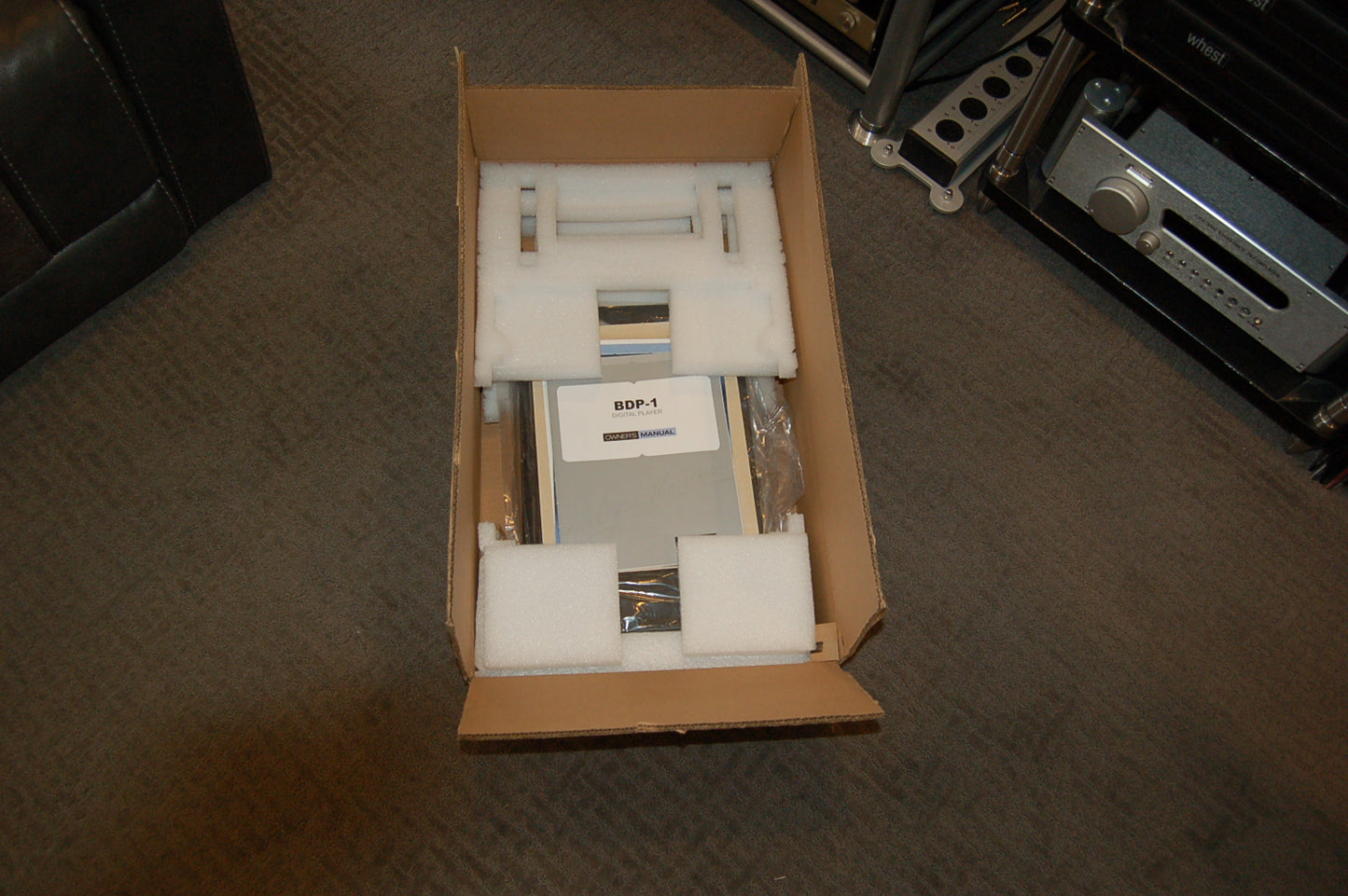Couldn't load pickup availability
Very good condition. Includes power cord and original printed owners manual. Will ship in original factory packaging
Design Principles
It should come as no surprise that Bryston's BDP-1 digital file player resembles the basic Auraliti L-1000 in that it has a soundcard, motherboard, USB port, and power supply. Though there is a display, there are no fans, no CD drives, no keyboards, no DAC circuitry, and no built-in routers to produce noise, RF interference, or heat, or to tax the player's central processing unit with multitasking demands. Like a CD transport, the BDP-1's only job is to output a digital stream from its S/PDIF BNC or AES/EBU XLR outputs. The open-source Linux software was selected to ensure the BDP-1's long-term viability. The BDP-1 differs from the Auraliti L-1000 in two ways: it has AES/EBU output in addition to S/PDIF, and a front-panel display and keypad to control playback, the latter freeing the BDP-1 from the L-1000's dependence on a network.
The BDP-1 accepts uncompressed AIFF and WAV music files, lossless FLAC files, and lossy-compressed formats such as MP3, stored on Windows-formatted USB drives. However, it will not work with Apple Macintosh-formatted disks. (This limitation may be fixed in future iterations of the player's operating system.)
Like the L-1000, the BDP-1 plays digital files from external flash drives or portable hard drives that can be plugged into one of its four USB 2.0 ports. When a file is selected for play, the BDP-1 first copies the file from the external drive to an internal buffer, thus avoiding the usual jitter problems when data are streamed directly from a USB port. The BDP-1's soundcard outputs the stream via the player's S/PDIF and AES/EBU ports to feed an external D/A processor. Bryston didn't include a TosLink output because its restricted bandwidth limited the player's output quality.
The Bryston BDP-1 is simple in function and purist in design, a combination that worked well in playing high-resolution music files. Its slim chassis and case of silvery brushed aluminum, simple controls, and outstanding sound make it a prime example of classic Bryston value.






